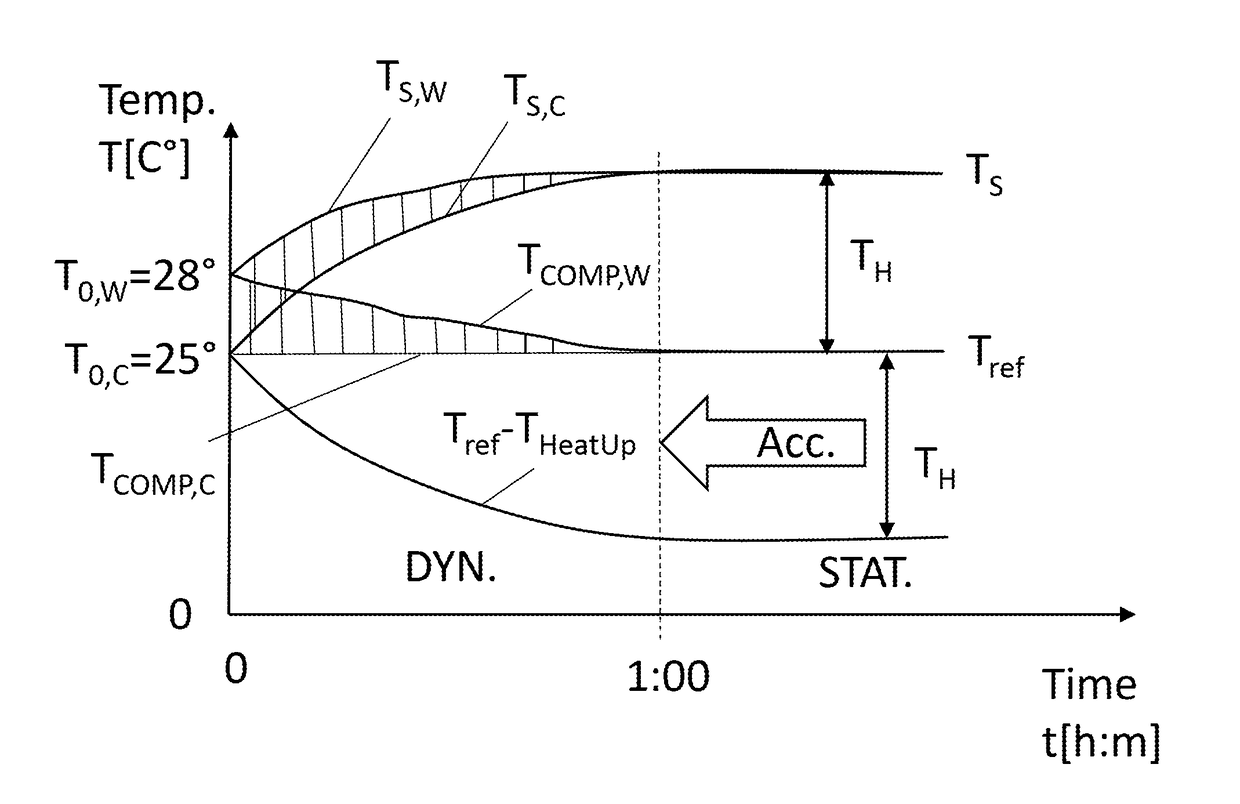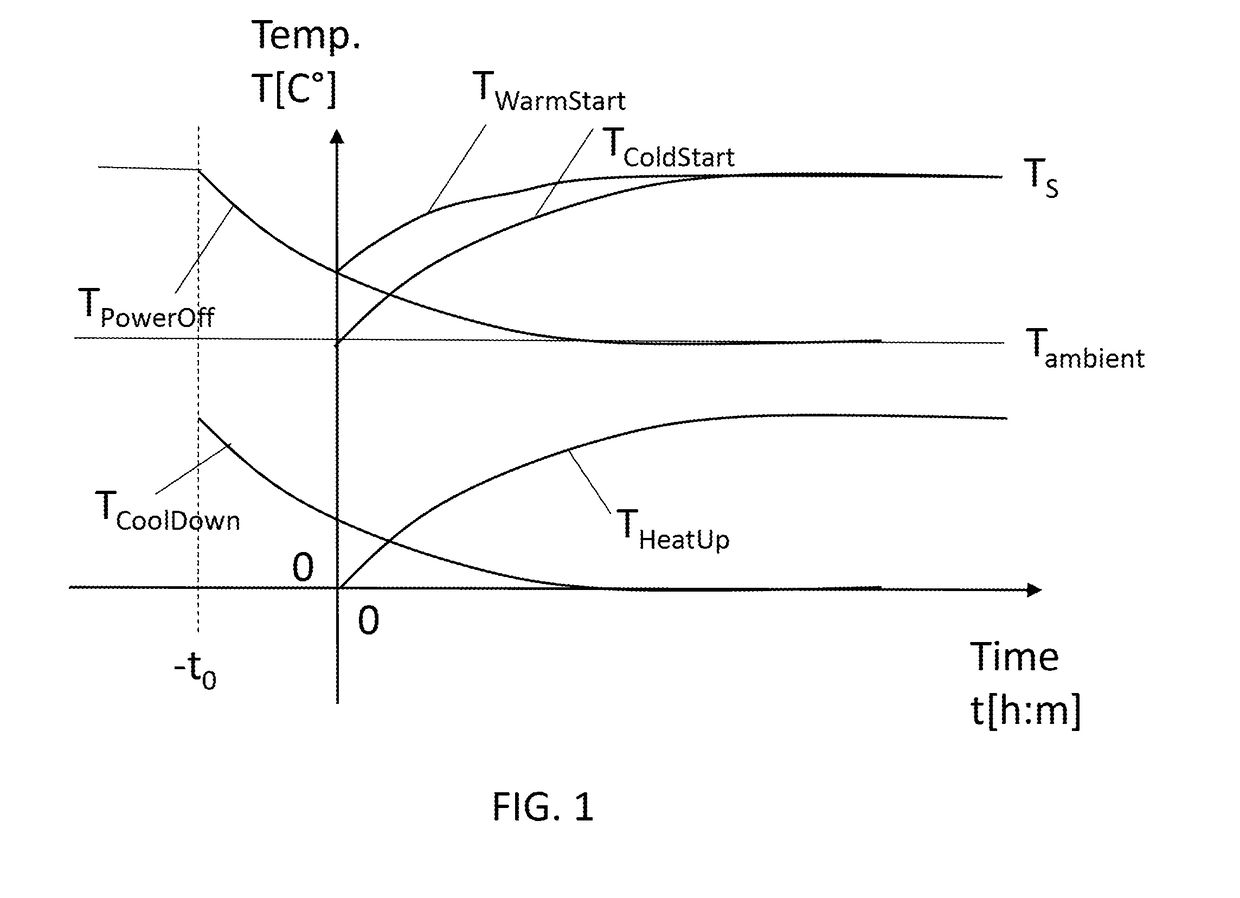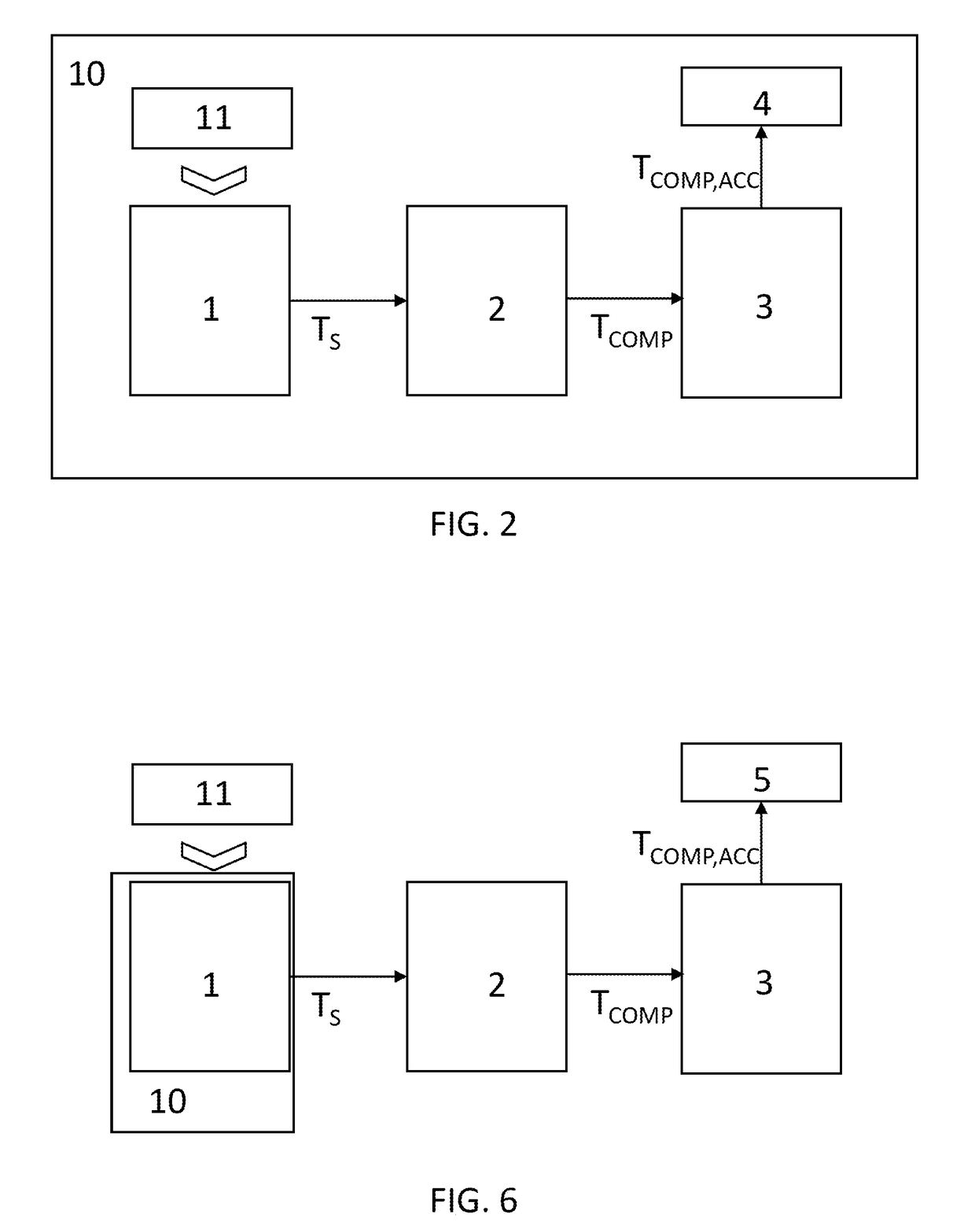Compensating a sensor signal
- Summary
- Abstract
- Description
- Claims
- Application Information
AI Technical Summary
Benefits of technology
Problems solved by technology
Method used
Image
Examples
Embodiment Construction
[0043]FIG. 1 shows temperature graphs T in connection with a cold start and a warm start of an electronic device containing heat emitting components inside the device affecting temperature measurement, thereby referring to a method according to an embodiment of the present invention.
[0044]The temperature graphs T are depicted in a temperature T over time t diagram. Temperature T shall be in degrees Celsius, time t in format [hours:minutes].
[0045]It is presently assumed that the parameter to be measured by means of a temperature sensor in an electronic device is the ambient temperature Tambient, i.e. the temperature ambient to the electronic device, also referred to as target temperature, or as reference temperature Tref. It is presently assumed that the ambient temperature Tambient is constant in the investigated period in time.
[0046]The graph THeatUp(t) represents a temperature signal that describes a temperature offset in an electronic device due to self-heating after a power-on o...
PUM
| Property | Measurement | Unit |
|---|---|---|
| humidity | aaaaa | aaaaa |
| time | aaaaa | aaaaa |
| power-on period | aaaaa | aaaaa |
Abstract
Description
Claims
Application Information
 Login to view more
Login to view more - R&D Engineer
- R&D Manager
- IP Professional
- Industry Leading Data Capabilities
- Powerful AI technology
- Patent DNA Extraction
Browse by: Latest US Patents, China's latest patents, Technical Efficacy Thesaurus, Application Domain, Technology Topic.
© 2024 PatSnap. All rights reserved.Legal|Privacy policy|Modern Slavery Act Transparency Statement|Sitemap



